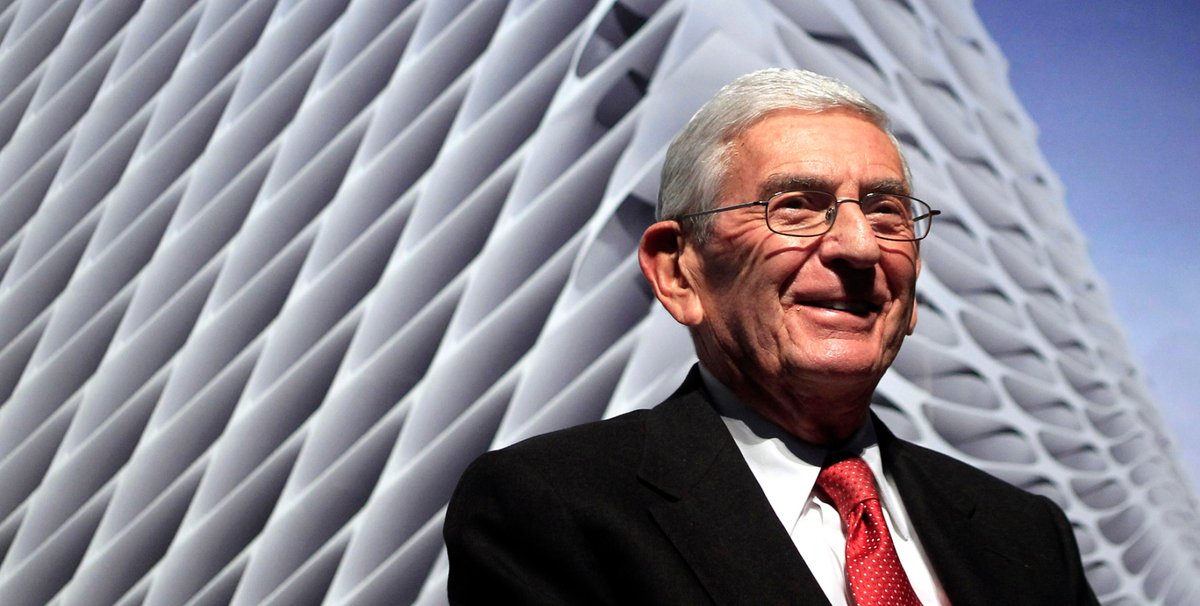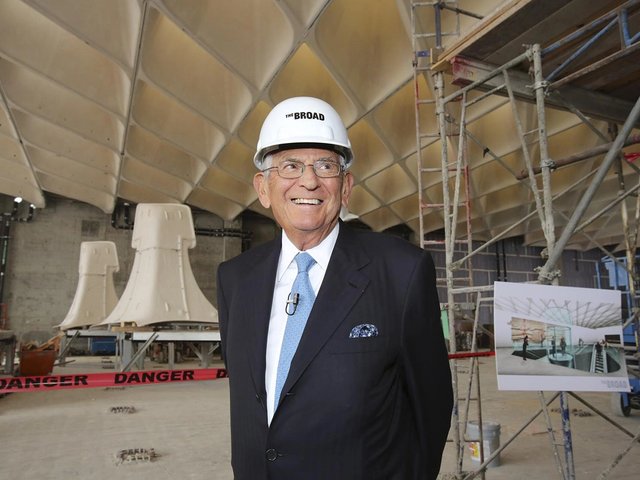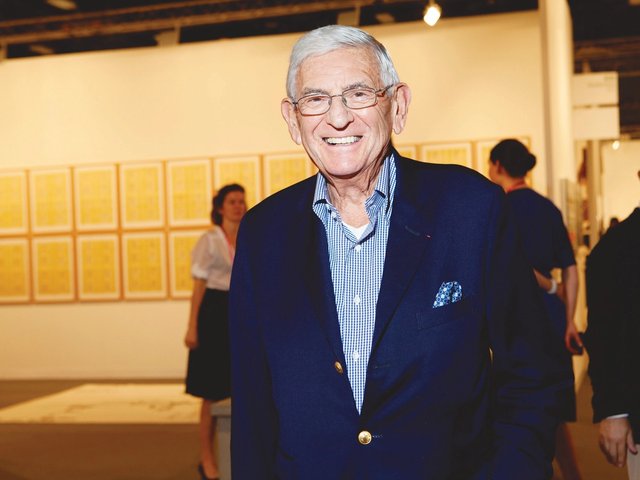Many people in the art world wish that contemporary art were taken more seriously by the rest of society, by people in different fields who are not even drawn to art. They dream about politicians, policy makers, educators and philanthropists alike recognising its value. They have been dreaming, maybe without ever realising it, about Eli Broad, the self-made homebuilding billionaire who was, until his death on 30 April, Los Angeles’s most prominent arts patron without exhibiting any particular affinity for or sensitivity to visual art.
To be fair, he was a dedicated art collector, buying thousands of works by major artists over the course of several decades and ultimately building a museum in Los Angeles, the Broad, to showcase them. He clearly appreciated contemporary art as a financial investment, as a philanthropic tool and as a public good that could play a dynamic role in revitalising cities, including his beloved downtown Los Angeles.
But even when giving tours of his own collection, which began in the 1970s with his wife Edythe’s interests in Van Gogh, Picasso and Matisse before skewing more contemporary, he never sounded particularly interested in individual works of art. He rushed friends through museums if they lingered too long. His approach to art was curiously brisk, efficient and frugal, traits he brought to almost every interaction or transaction, which were hard to tell apart.
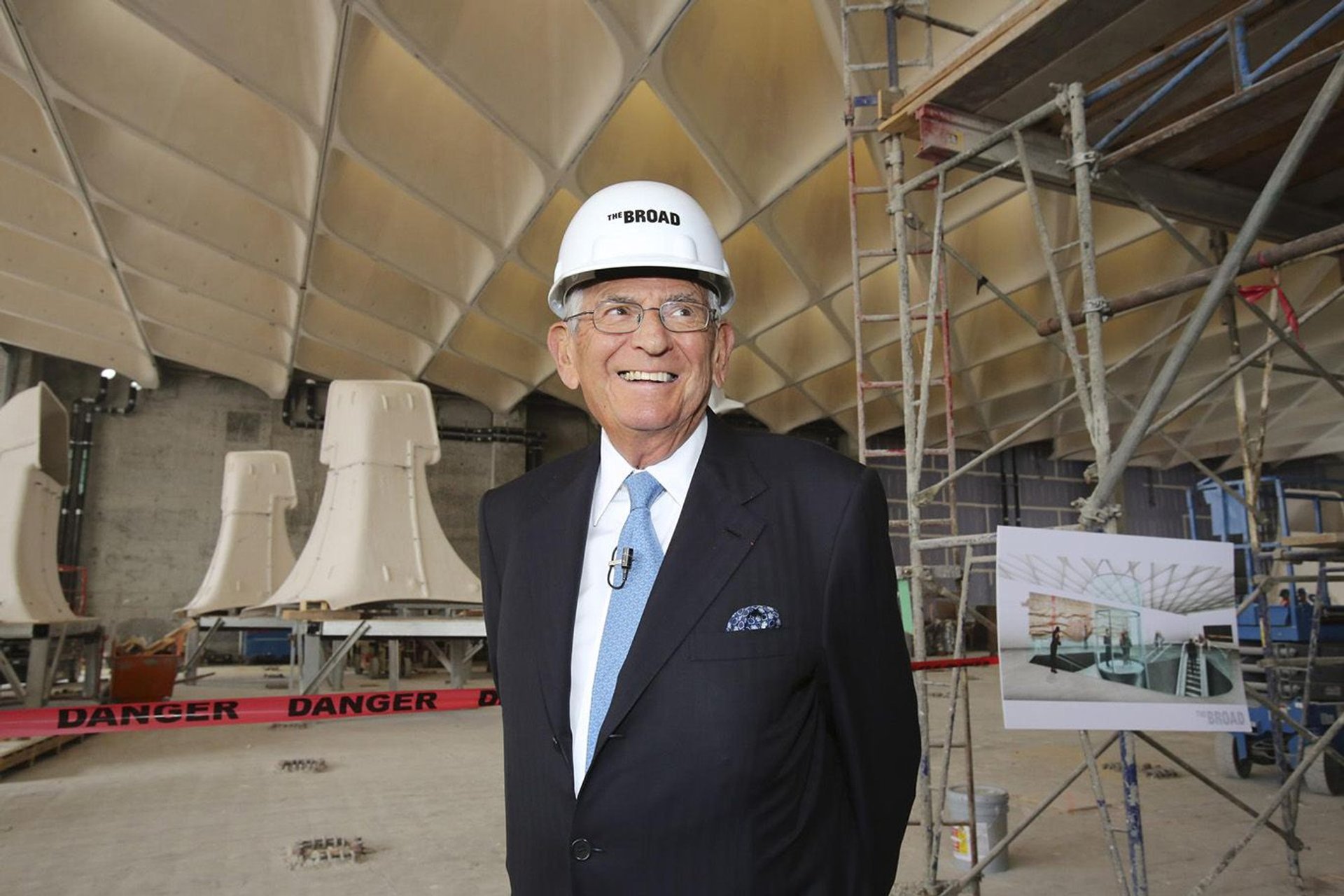
The philanthropist Eli Broad Ryan Miller © Capture Imaging
When he invited me to his hilltop Brentwood home for an interview in 2011, not long after announcing his plans for the Broad, he shared some stories about his friendships with artists such as Roy Lichtenstein and Jeff Koons, whose mirror-polished, stainless steel Rabbit stood on a pedestal in the entryway. “I'd be bored to death if I spent all my time with other businesspeople, bankers and lawyers,” he said.
Yet when he spoke about individual works of art, he mainly talked about the acquisition process or provenance. He disclosed that one early acquisition, his 1933 Joan Miró painting, had previously been owned by Nelson A. Rockefeller, who had to liquidate it along with much of his art to finance his presidential campaigns. And, in a favourite story, he recalled scooping up Cindy Sherman’s Untitled Film Stills from Metro Pictures in the early 1980s, when they sold for $150 to $200 each. He could not say why he liked them.
His own professional training was in public accounting. He studied accounting and economics at Michigan State and said that he was, at 20, the youngest Michigan resident to be licensed as a CPA. He brought this skill set to bear when, soon after, he started a home construction business with Donald Kaufman, the husband of his wife’s cousin, which became the basis of his fortune.
The fact that he was so efficient and impatient, qualities he acknowledged and even applauded in his 2012 book The Art of Being Unreasonable, made it difficult for many museum leaders and trustees to work with him. As Connie Bruck wrote in a profile for New Yorker magazine: “Broad’s not-for-profit enterprise resembles his previous businesses in its corporate structure, analytic rigour, and insistence on quantifiable results.” And, she added, “he expects his directives to be followed.”
I'd be bored to death if I spent all my time with other businesspeople, bankers and lawyersEli Broad
The most revealing stories about him date to the early 1980s, when he helped to create the city’s new Museum of Contemporary Art (MOCA). When Count Giuseppe Panza di Biumo offered to sell MOCA a trove of works by Rothko, Kline, Rauschenberg and their contemporaries, Broad helped with the negotiations. But he also negotiated behind the museum’s back to buy the collection for himself and never contributed any money for the acquisition. He continued to assert his will there on matters small and large, strong-arming other trustees. One artist on the board, Robert Irwin, who famously abandoned his Los Angeles studio in 1970 to spend time in the Mojave as he shifted from making art objects to making art out of light, has said that his clashes with Broad drove him back to the desert.
Later, when Broad was a trustee at the Hammer Museum, the newly appointed director Ann Philbin stood her ground in 1999 to prevent him from using funds from the $30.8m sale of Leonardo da Vinci’s Codex Hammer to create the Eli and Edythe Broad Art Center at UCLA. He promptly left the board. After that, as a trustee at the Los Angeles County Museum of Art (Lacma) who yielded inordinate power thanks in large part to his $60m donation towards an expansion (more than all the other trustees combined), he helped to handpick Michael Govan as the director. In a flush of excitement, Broad once compared Govan to Bill Clinton in his ability to connect with people, but the two had a falling out in 2008, with Broad telling The New York Times, just weeks before the opening of the Broad Contemporary Art Museum at Lacma, that he was not giving his collection to that museum.
He returned to MOCA in late 2008 during its near-death financial crisis, offering a $30m bailout with more strings attached than a marionette. The gift consisted of $15m doled out over five years to “support exhibitions” in a way that allowed Broad to manage—or micromanage—the institution and another $15m to match endowment gifts. And, as I later reported in the Los Angeles Times, the gift also had a clause requiring that MOCA remain independent and not be acquired for ten years by "any museum located within one hundred miles of [its] Grand Avenue facility," excluding "educational institutions or museums affiliated with educational institutions.” In essence, he prevented Govan from taking over MOCA when, five years later, a merger with Lacma was proposed.
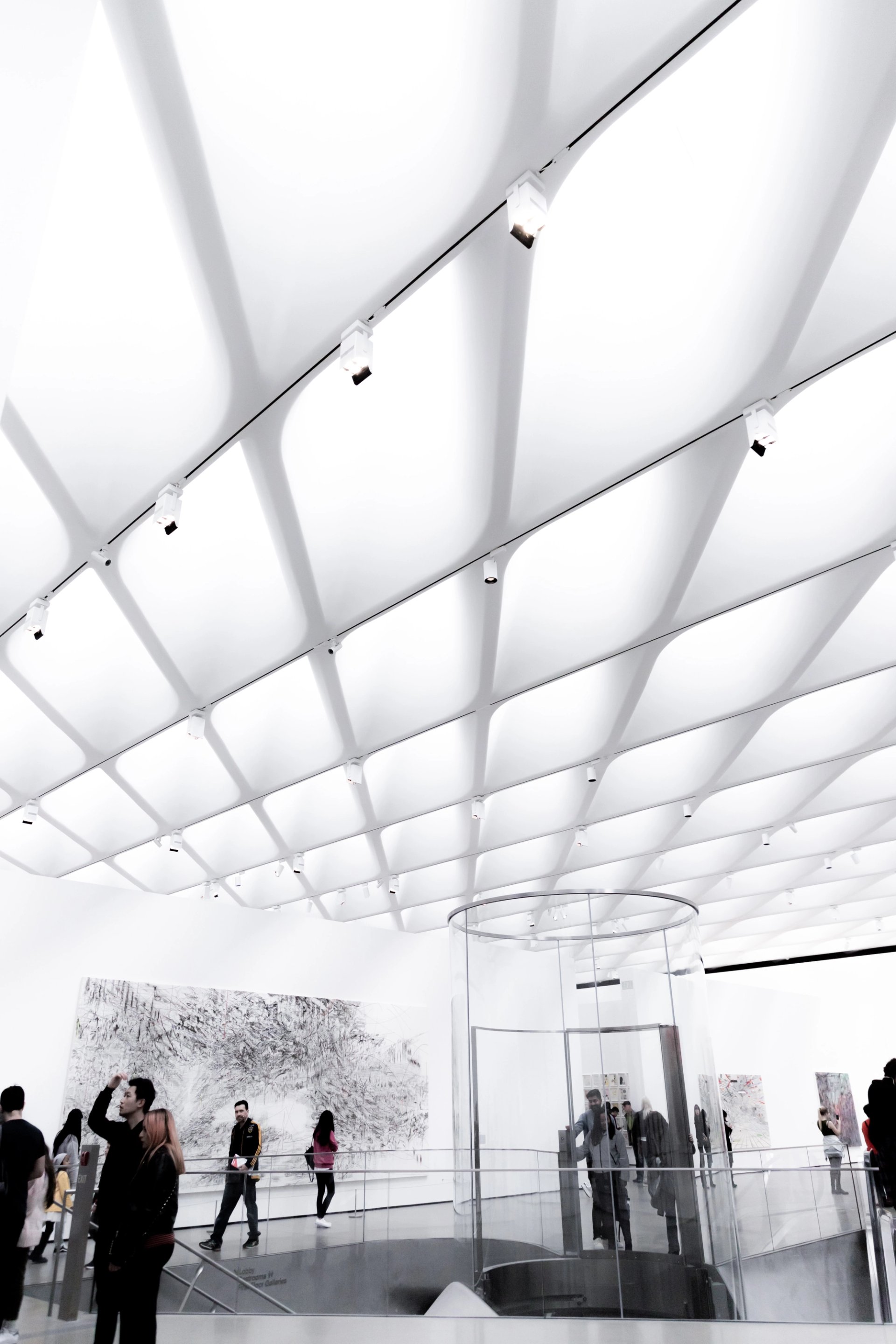
The opening of the Broad changed the Los Angeles museum-going demographics to include younger, more diverse audiences Photo: Brayden Law on Unsplash
I personally do not think there is anything wrong with buying art as an investment or using art as a tool for urban planning or revitalisation, which the Broad museum has done with great success. Before Covid shut down the city, the museum and its restaurant, Otium, had brought bustling street life to the area and changed the Los Angeles museum-going demographics to include younger, more diverse audiences, both of which are significant accomplishments.
But I do think understanding Broad’s priorities helps to explain why he found himself at odds with so many cultural leaders here. Yes, as most of his obituaries describe, he dramatically shaped the Los Angeles art scene, but so did the museum leaders who stood up to him. It was not a pleasant process.


